Dairy Free Cooking for Food Allergies Babies with Kathlena The Allergy Chef
- How to use substitutes for dairy in recipes to make food that is delicious and safe for your family with cow's milk protein allergies
- How to read food labels to safely choose foods for babies with diagnosed IgE mediated milk protein food allergies
- How to prevent cross-contamination when selecting foods at the grocery store
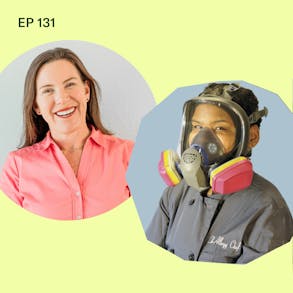
LISTEN TO THIS EPISODE
Episode Description
Are you struggling to cook for your family with food allergies? In this episode, I’m joined by Kathlena who is The Allergy Chef to talk all about dairy-free cooking.
Kathlena has almost 200 allergies and intolerances and created The Allergy Chef to help families navigate cooking while considering food allergies. She and her team have published cookbooks, do nation-wide outreach, create free resources and recipes, and have a bakery! She dives into cross-contamination, substitutes for cooking, her own family food allergy story, and more!
About the Guest
- The Allergy Chef has over 200 food allergies and intolerances. Several of her allergies are life threatening and she can’t drink most water (only has one source of safe water). She has a handful of safe foods to eat. She has learned to prepare meals for members of her household who suffer from various food allergies.
- Kathlena is the founder of RAISE website, a platform that provides solutions for restricted diets including allergies, intolerances, special diets and EOE(eosinophilic esophagitis). Membership includes access to webinars, allergy friendly recipes, guides, printables, and more.
- Allergy Chef owns The Free & Friendly Foods Bakery, they are gluten-free, vegan, Top 8 Allergy Free, Very Allergy Friendly, Organic only, all natural, and Non-GMO ingredients.
- Offers Online Courses LINK HERE
Links from this Episode
- The Allergy Chef website HERE
- Follow The Allergy Chef on IG @theallergychef
- Purchase cookbook & guides HERE
- Baby-Led Weaning with Katie Ferraro program with the 100 First Foods™ Daily Meal Plan, join here: https://babyledweaning.co/program
- Baby-Led Weaning for Beginners free online workshop with 100 First Foods™ list to all attendees, register here: https://babyledweaning.co/baby-led-weaning-for-beginners

Latest Episodes
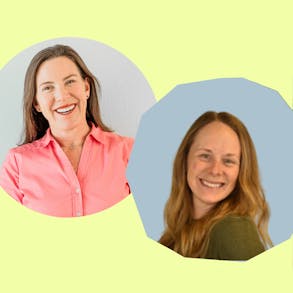
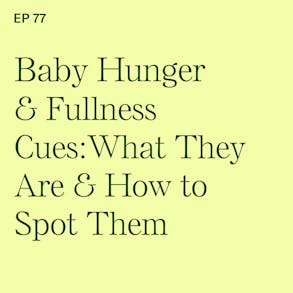
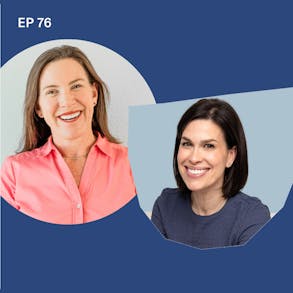
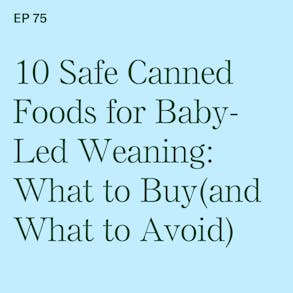
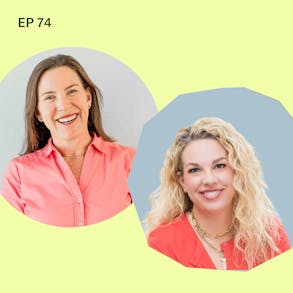
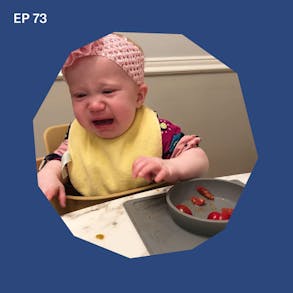
Kathlena (0s):
So if you take a dairy free milk and combine it with acid, such as lemon juice or apple cider vinegar, let it sit for a little bit. You have a faux buttermilk. It's not going to curdle the same. And the type of plant-based milks that you use will determine how effective it is.
Katie Ferraro (15s):
Hey, there I'm Katie Ferraro, Registered Dietitian, college nutrition professor, and mama of seven specializing in baby led weaning. Here on the Baby-Led Weaning Made Easy podcast I help you strip out all of the noise and nonsense about feeding, leaving you with the competence and knowledge you need to give your baby a safe start to solid foods using baby led weaning. Welcome back today. I'm so excited to be chatting with Kathlena, who is the allergy chef. If you guys are on Instagram, you have got to check her out. If you have any interest in cooking for people that have food allergies, Kathlena's story, will blow your mind.
Katie Ferraro (58s):
I don't want to ruin it, but I just asked her like, are you the person in the role that has the most food allergies? And she assured me, she certainly is not. Although she does have over 200 different food allergies and intolerances with just a few safe ingredients, she runs the allergy chefs to help families that are trying to prepare foods safely in a world, dealing with food allergies. So today Kathlena is on to talk about some dairy free cooking tips for babies with food allergies. She's going to be sharing some ideas on, if you do need to eliminate dairy, what you should be looking out for, not just the obvious, like don't cook with cow's milk, but what are some substitution ideas? And she's got some great resources for you guys. If you are dealing with diagnosed cow's milk protein allergy for your baby.
Katie Ferraro (1m 41s):
So with no further ado, I want to introduce you guys to Kathlena, the allergy chef. Who's here talking about dairy free cooking for food allergy babies. All right. Well Kathlena, thank you so much for being here. This is so cool to get to talk with the allergy chef in person.
Kathlena (1m 55s):
I'm so glad to be here. Thank you for having me.
Katie Ferraro (1m 57s):
Okay. So Kathlena, you have 200 different allergies and intolerances. Like you are clearly living this every day. Tell me about your background. What inspired you to start your business as the allergy chef and what type of work do you do?
Kathlena (2m 10s):
So my formal background is actually in like PR technology, networking communications, and I've always been a pretty bright person. I finished college at 19, so I kind of have that driven force behind me, but after almost dying and surviving, that's when we were kind of like, you know what, all the stuff that's in my head, we need to put it somewhere. And that was really the catalyst for launching our business. So we started the bakery, we did six cookbooks. Then we got into social media, started our membership platform and just kind of realized that there was this big need that no one was filling. And that's really what got us there.
Katie Ferraro (2m 46s):
What is your actual niche when you're writing cookbooks and you have a membership platform, what is the audience that you're serving? What sort of value are you providing?
Kathlena (2m 55s):
So everything we do by default is gluten, dairy, and egg free. And then there, we do a lot of other things because we are like a collector of all the odds and ends. We try to catch everyone who's falling through the cracks. So we look at special diets plus allergy, like a nut-free vegan, right, or nut free paleo. Like these people are not being served. And so we serve them coconut free AIP, right? These different kinds of things that most people overlook because we've had to do it ourselves. We serve those communities. So on our platform, we have an advanced recipe search. It has over 75 options for filtering, for individual allergens food groups. Like, you know, if you needed cruciferous free or nightshade free and then for specialty diets.
Kathlena (3m 36s):
So if your gaps, AIP, vegan, SCD, paleo, all that sort of stuff, you can just plug in what you need. And the cool thing is, is it's AND filter, not an OR filter. So all of your needs are met in one go. And then like you can combine people from your household. So just meeting everyone's needs. It's what we do. So I mean, it stretches us then, but I think it creates something that's even cooler in
Katie Ferraro (3m 56s):
The long run for our moms or caregivers who are listening to have babies who have a milk allergy - that's what we're focusing on. Specifically in today's episode, food labels can be their best ally, but they also can be super overwhelming. I'm curious if you have any tips for parents and caregivers with babies diagnosed with IgE mediated cow's milk protein allergy - they're out shopping, what do they need to be reading for on their labels?
Kathlena (4m 18s):
So in the United States and in other countries as well, it's required that if any of the top allergens milk being one of them and any country that has a top allergen milk is always one of them, whether it's top eight, nine, 10, 12, or 14, milk is included and that's all forms of milk. Whether it be milk casein, lactose, whey, all forms, it has to be called out on the label clearly - they can't use a super scientific name. This is especially helpful, like with eggs because there's like 16 different ways to say egg, whereas milk there's not as many ways. If you read the label, it must state contains milk, right? Or within the labeling itself, the word milk has to be in bold, like clearly in bold, unfortunately, and we have this really great article on our website and I'll send you the link for it.
Kathlena (5m 5s):
A lot of dairy free foods are made on shared equipment with dairy. So as a parent, it can be incredibly overwhelming, which is why I always encourage people, find brands that either own their equipment or like, you know, really allergy driven, created by allergy parents and families. Cause those are the ones that are going to look out for you the most. And you know, if you see may contains on a label, that means that either dairy was on the equipment or in the facility.
Katie Ferraro (5m 32s):
Can I ask you a question about that labeling? Like I know the original intent of the legislation, atleast in the United States in 2004 was to make you clearly say, if it contains milk, it has to say contains milk. Instead of one of the 50 other ways you can say milk, but as a result, as I understand it, a lot of food manufacturers responded to that by being scared. And in order to kind of cover their own, you know what, they would just say across the board, this product was produced in a facility that may have come into contact with and list all big eight allergens because they don't want to get sued cause there might be cross-contamination at which point their product, which never had soy in it, people were soy allergy like, "Hmm. Well probably shouldn't do it". Is that still the case where they're just kind of doing these blanket may contain statements?
Kathlena (6m 14s):
Yes and no, but more yes than no. And the real issue here is what's called co-packing for those of you who aren't aware, what happens is, is if I have a recipe and I put it together, I then take it to another company that owns a facility and then they take on clients and they produce the product for them, but they can take on any client that they want at any time - meaning the equipment and the facility can change overnight. And so the blanket statement really does cover them because they literally have no control over the equipment or the facility. So in that sense, it's really difficult. You know, for example, there's one company that makes dairy-free milk and they have a statement that it may contain dairy. And they were like, well, we use two facilities, actually two co-packers, one co-packer has dairy on-site, but the other doesn't and because it's too difficult for us to track which ones are coming from which places and the packaging and all these different hoops that they would have to jump through, they just have the one blanket statement.
Kathlena (7m 8s):
So you might be getting the milk from the dairy free co-packer or he might be getting milk from the dairy co-packer you literally don't know - and they can't tell you. If you go online, the FDA has voluntary recalls that you can look through. And there's a lot of undeclared milk, undeclared wheat undeclared, this, that, or the other. And most people don't know, you know, and companies aren't like sending you an email saying, "Hey, in our last batch, this one thing happened".
Katie Ferraro (7m 33s):
Share some ideas about dairy substitutes for moms or caregivers who are having trouble, figuring out how to substitute things like cheese and milk and yogurt, especially for sauces. Like we always recommend, okay, put a sauce on dry breads and protein products because they help moisten the foods which helps reduce choking risk. But a lot of sauces are dairy based, any tips there for substitutes?
Kathlena (7m 53s):
So one of the easiest ones would be like a cashew cream. If you have a child that can have cashew, you would use like cashew plus chicken broth or just a broth, if you're vegan or cashew plus a dairy free milk. And it essentially makes like a nice thin sauce. And then you can add salt and you can add other mild seasonings, especially if it's for a young child and boom, you've got essentially like a cream sauce. For yogurt, the two brands that we've vouch for are Kite Hill and Vega. But again, it has to be the right size. And it's in that article that I'll shoot over to you.
Katie Ferraro (8m 24s):
And I will link to all the articles that you're mentioning on the show notes for this episode. If you guys go to https://blwpodcast.com/ and just search allergy chef, we'll make sure they're there. Because again, it's pretty specific needing to know size and brands and I'm having trouble keeping track.
Kathlena (8m 38s):
Yeah. And so let's see for cheese. So here's, what's very interesting. There are several brands where different types of their product come into contact with dairy and then others don't. So Follow Your Heart is a really good example. They have this really great allergen chart on their website that tracks the product and the facility and the equipment. And so their cheese blocks come into contact with dairy, their cheese shreds do not. So it's understanding again like size or type and picking a brand. However, once you find a brand - cheese milk, cream, cheese sour cream yogurt, they're all one-to-one exchanges. The only time it's not a one-to-one exchange is if someone calls for like a low-fat milk, whole milk, or like buttermilk or cream, those are the four things that quite frankly are really difficult to substitute.
Kathlena (9m 29s):
So if you take a dairy free milk and combine it with acid, usually like one cup of dairy free milk, plus two teaspoons of an acid, such as lemon juice or apple cider vinegar. Let it sit for a little bit. You have a faux buttermilk it's not going to curdle the same. And the type of plant-based milk that you use will determine how effective it is. For example, almond milk works better than oat milk and then dairy free milks again in general, one-to-one exchange in recipes. So if a developer calls for one cup of milk, you use one cup of dairy-free milk. If they call for cream, that's where you have to start playing with ratios. And the percentage scale works really well. If you think of what they're asking for is a hundred percent, like let's say they ask for a hundred milliliters of cream at 30% fat.
Kathlena (10m 17s):
Then what you need is 70 milliliters of dairy free milk, and then 30 milliliters of fat - so whether it be a shortening oil, that's how you would substitute.
Katie Ferraro (10m 28s):
Well, Kathleen, thank you so much. This has been hugely informative. I am. So just a huge fan of your work. And I wanted to know where our audience could go if they do want to learn more about some of your research.
Kathlena (10m 39s):
So our website https://theallergychef.com/ is probably the easiest place to go. There's some free resources, there's articles, there's recipes. And then if you want more, you can always join with the membership and dive a lot deeper.
Katie Ferraro (10m 52s):
Well, thanks so much for being here. This is awesome.
Kathlena (10m 54s):
Thank you so much for having me.
Katie Ferraro (10m 56s):
Well, I hope you got enjoyed that episode and interview with Kathlena, the food allergy chef. I know she kind of mentioned a lot of different resources, so I am going to be linking to everything from today's episode. If you guys go to the show notes for this episode, it's at https://blwpodcast.com/131.
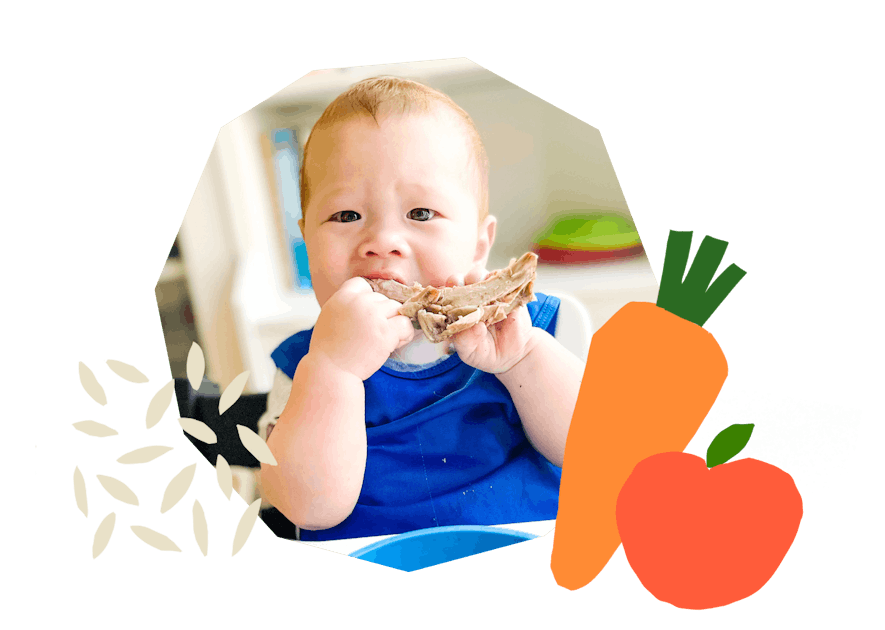
The Program Baby-Led Weaning with Katie Ferraro
A step-by-step digital program for starting solid foods safely and navigating the original 100 FIRST FOODS™ meal plan with baby-led weaning.
 EXPERT-LED, PROVEN APPROACH TO EATING REAL FOOD
EXPERT-LED, PROVEN APPROACH TO EATING REAL FOOD CONCISE VIDEO TRAININGS TO MASTER BABY-LED WEANING
CONCISE VIDEO TRAININGS TO MASTER BABY-LED WEANING 100 FIRST FOODS DAILY MEAL PLAN WITH FOOD PREP VIDEOS
100 FIRST FOODS DAILY MEAL PLAN WITH FOOD PREP VIDEOS
Baby-Led Weaning for Beginners Free Workshop
Is your baby ready to start solid foods, but you’re not sure where to start? Get ready to give your baby a solid foundation to a lifetime of loving real food…even if you’re feeling overwhelmed or confused about this next stage of infant feeding.
Get baby-led weaning recipes and tips delivered to your email inbox.

